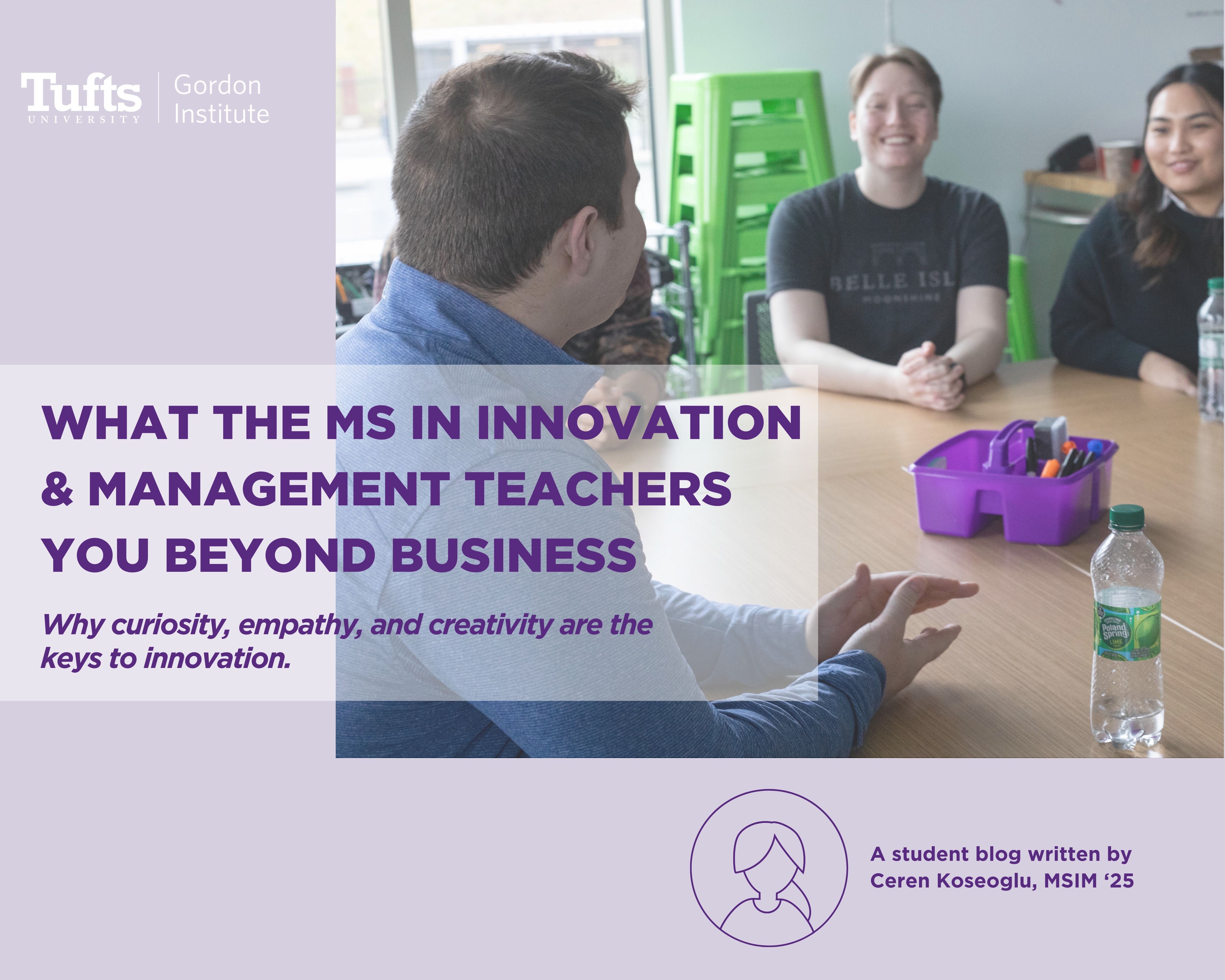What the MS in Innovation & Management Teaches You Beyond Business

From the moment you step into the Master of Science in Innovation & Management (MSIM) program at Tufts, it’s clear that this isn’t your ordinary graduate education. There are no stale lectures or cookie-cutter solutions — instead, you’re invited into a world where curiosity, empathy, and creativity guide every discussion and project.
Rather than focusing solely on theories and metrics, MSIM pushes us to explore questions like “Why?” and “What if?”, encouraging students to see beyond the balance sheets. It’s a dynamic environment where you connect dots between seemingly unrelated ideas — much like Steve Jobs did when he credited a simple calligraphy class for sparking the groundbreaking typefaces in Apple’s early Macintosh computers.
Here, you learn to look for insights from customer research, design, engineering, and psychology, discovering inventive solutions you might overlook through a traditional business lens.
Curiosity: The Gateway to Innovation
At the heart of the MSIM experience is a culture of never stop asking. This isn’t about accumulating facts; it’s about challenging the status quo. Whether you’re redesigning an existing product or envisioning a brand-new venture, curiosity propels you to question every assumption. Projects often require venturing outside your comfort zone — talking to real users, poring over unexpected research, or experimenting with new technologies.
In this program, curiosity isn't just encouraged; it's essential for creating meaningful change.
Empathy: Designing for Real People
While business schools often talk about “target markets,” MSIM highlights the human stories behind the data points. Empathy underscores each step in the innovation process. By directly engaging with the people who will use your products or services, you learn to listen more than you speak. This empathetic lens extends to working with peers, too. Teams are diverse in both academic and cultural backgrounds, ensuring that every collaboration becomes an exercise in understanding how different perspectives can merge into transformative ideas.
Creativity: Turning Inspiration into Action
Innovation is nothing without creativity. It’s easy to think of creativity as a spark of genius, but MSIM reframes it as a skill you can hone through practice. You’ll tackle challenges that force you to brainstorm, iterate, and adapt—much like an artist refining a piece of work. A semester might see you designing prototypes, pitching new concepts, or building campaigns from scratch. In these moments, success isn’t measured by how often you get it right on the first try but by how willing you are to embrace experimentation and learn from the failures.
Collaboration: Where Ideas Emerge and Evolve
No matter how brilliant an idea might be, it rarely reaches its full potential without input from others. In the MSIM program, collaboration isn’t a checkbox; it’s a foundational pillar of every project. Each team becomes a melting pot of experiences and expertise, driving you to develop communication skills that transcend cultural and disciplinary boundaries.
By practicing open dialogue and constructive feedback, you create a space where groundbreaking solutions can emerge.
A Mindset That Outlasts the Classroom
The real power of MSIM lies in how these lessons shape your mindset well beyond graduation. Employers across industries value leaders who can think laterally, connect unlikely dots, and empathize with both customers and colleagues. Whether you’re starting your own company or joining an established organization, the ability to consistently ask new questions, design solutions with empathy, and collaborate across silos sets you apart.
Based on my experience, the MSIM program at Tufts doesn’t just equip you with business skills and strategic knowledge — it helps you cultivate a way of seeing the world that is curious, compassionate, and unafraid to take bold creative risks. It’s this blend of skills and perspectives that transforms students into catalysts for change, ready to tackle the challenges of tomorrow with empathy at the forefront and innovation as the driving force. In a world where many professionals share similar technical skills, it’s this mindset—one that blends creativity, adaptability, and human-centered problem-solving—that truly makes the difference in standing out.